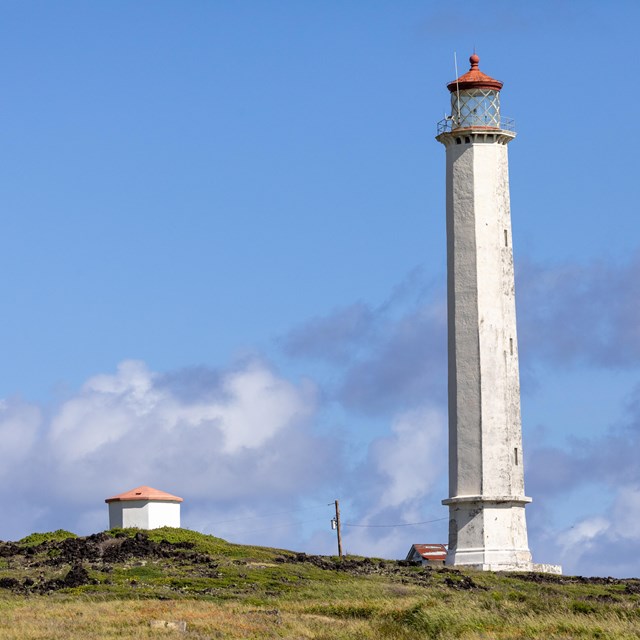
NPS Photo
Description and Rationale
Nonnative plant species invasions present a serious threat to Pacific island ecosystems. They reduce native plant diversity and abundance and alter important habitat. Ecologically disruptive species (such as nonnative grasses, faya trees, miconia, strawberry guava) can also have economic and cultural costs.
For example, nonnative grasses fuel fires that can threaten urban areas, agricultural lands, and culturally significant landscapes. Monitoring the distribution and abundance of nonnative species helps us assess changing threats to native ecosystems, decide on the best control strategies (eradication, containment, exclusion, monitoring), and identify priority areas for management.
Monitoring Objectives
- Determine the changes in the distribution and abundance of disruptive nonnative plant species along belt transects spanning selected plant communities and natural areas of concern in Pacific Island Network (PACN) parks. Belt transects will consist of a mixture of legacy transects and newly generated random transects.
- Determine the changes in the distribution and abundance of disruptive nonnative plant species within and around major dispersal corridors in PACN parks. Major dispersal corridors consist of areas where humans (e.g., seeds on vehicles, boots, field equipment, etc.) are the primary vector for spreading invasive plant species. This objective aims to monitor established invasive plant species as well as incipient invaders.
Monitored At
-
 American Memorial Park
American Memorial ParkSee what's monitored at Memorials at American Memorial Park.
-
 Haleakalā National Park
Haleakalā National ParkSee what's monitored at Haleakalā National Park.
-
 Hawaiʻi Volcanoes National Park
Hawaiʻi Volcanoes National ParkSee what's monitored at Hawaiʻi Volcanoes National Park.
-
 Kalaupapa National Historical Park
Kalaupapa National Historical ParkSee what's monitored at Kalaupapa National Historical Park.
Last updated: November 6, 2024
